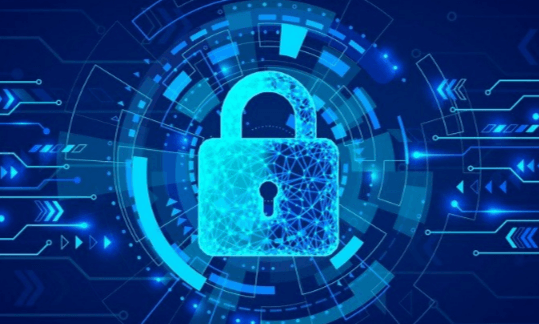Top Cybersecurity Tips for Protecting Your Data

In today’s digital age, protecting your data has become a necessity rather than an option. As cyber threats grow more sophisticated, it’s crucial to implement strong cybersecurity practices to safeguard your personal and professional information. Whether you’re an individual concerned about your privacy or a business aiming to protect sensitive data, understanding and applying the right cybersecurity measures can make all the difference. This article provides top cybersecurity tips to help you protect your data effectively.
Understanding the Importance of Cybersecurity
Cybersecurity is the practice of protecting systems, networks, and programs from digital attacks. These cyberattacks are usually aimed at accessing, changing, or destroying sensitive information; extorting money from users; or interrupting normal business processes. With the increasing reliance on digital platforms, the importance of cybersecurity cannot be overstated. Data breaches can result in severe financial losses, damage to reputation, and legal consequences. For individuals, a breach can mean losing control over personal information, leading to identity theft and fraud. For businesses, it can mean the loss of customer trust and significant financial repercussions. Therefore, understanding the fundamentals of cybersecurity is the first step in protecting your data.
Why Your Data is Valuable
Before diving into cybersecurity tips, it’s important to understand why your data is valuable to cybercriminals. Personal data such as names, addresses, Social Security numbers, and credit card details can be used to commit identity theft, while business data, including trade secrets and customer information, can be exploited for financial gain or to harm a company’s reputation. Cybercriminals can sell this data on the dark web, use it to gain unauthorized access to accounts, or even hold it for ransom. Knowing the value of your data underscores the need for robust cybersecurity practices.
Use Strong and Unique Passwords
One of the simplest yet most effective ways to protect your data is by using strong and unique passwords for your accounts. A strong password typically includes a mix of letters, numbers, and special characters, and avoids common words or easily guessable information like your name or birthdate. Additionally, each account should have a unique password. This way, if one account is compromised, your other accounts remain secure. Consider using a password manager to generate and store complex passwords, making it easier to manage multiple accounts.
Enable Two-Factor Authentication (2FA)
Two-factor authentication (2FA) adds an extra layer of security by requiring not only a password and username but also something that only the user has on them, such as a physical token, a smartphone, or a fingerprint. Even if a hacker obtains your password, 2FA makes it significantly harder for them to access your account. Many online services, including email providers and social media platforms, offer 2FA options. Enabling 2FA on your accounts can significantly reduce the risk of unauthorized access.
Keep Your Software Updated
Software updates often include patches for security vulnerabilities that have been discovered since the last version was released. By keeping your operating systems, antivirus programs, browsers, and other software up-to-date, you protect yourself from known vulnerabilities that hackers could exploit. Enable automatic updates whenever possible to ensure that your software is always current.
Be Wary of Phishing Scams
Phishing is a type of cyberattack where attackers impersonate legitimate organizations through emails, messages, or websites to trick individuals into providing sensitive information such as usernames, passwords, and credit card details. These attacks often appear as urgent messages requiring immediate action, such as verifying account details or responding to a security threat. To protect yourself from phishing scams, always verify the sender’s email address, look for signs of phishing (such as poor grammar or generic greetings), and never click on suspicious links or download attachments from unknown sources.
Secure Your Home Network
Your home network is the gateway to all your online activities, making it a prime target for cybercriminals. To secure your home network, start by changing the default password on your router to a strong, unique password. Enable encryption (WPA3 is currently the strongest) to protect your network traffic from being intercepted. Additionally, consider setting up a guest network for visitors to limit their access to your main network. Regularly update your router’s firmware to protect against security vulnerabilities.
Use a Virtual Private Network (VPN)
A Virtual Private Network (VPN) encrypts your internet connection, making it more difficult for hackers to intercept your data. When using public Wi-Fi, a VPN is particularly important as these networks are often unsecured, making it easier for cybercriminals to snoop on your online activities. By using a VPN, you can protect your browsing history, personal information, and other sensitive data from being accessed by unauthorized parties.
Backup Your Data Regularly
Regularly backing up your data is crucial in protecting it from loss due to cyberattacks, hardware failures, or accidental deletion. Ensure that you have multiple backups, including an offline backup (such as an external hard drive) and a cloud-based backup. By doing so, even if your data is compromised, you can restore it without significant loss. Make it a habit to back up your data on a regular schedule, and verify the integrity of your backups periodically.
Be Mindful of Social Media Sharing
What you share on social media can be used against you by cybercriminals. Oversharing personal details such as your location, birthday, or even your mother’s maiden name can provide attackers with the information they need to guess passwords, answer security questions, or craft convincing phishing attacks. To protect your data, limit the amount of personal information you share on social media and review your privacy settings to control who can see your posts.
Educate Yourself and Your Family
Education is a powerful tool in cybersecurity. By understanding the different types of cyber threats and how to recognize them, you can take proactive steps to protect your data. Educate yourself and your family members about safe online practices, such as not clicking on suspicious links, avoiding the use of public Wi-Fi for sensitive transactions, and understanding the importance of privacy settings on social media. The more informed you are, the better equipped you will be to protect your data.
Use Antivirus and Anti-Malware Software
Antivirus and anti-malware software are essential tools in protecting your data from malicious attacks. These programs can detect, block, and remove harmful software that could compromise your data. Ensure that your antivirus software is up-to-date and configured to scan your system regularly. While antivirus software provides a critical layer of defense, it should be used in conjunction with other cybersecurity measures for comprehensive protection.
Be Cautious with Email Attachments and Links
Email is a common vector for cyberattacks. Opening an attachment or clicking on a link in a malicious email can result in malware infection, data theft, or unauthorized access to your accounts. To protect your data, be cautious with email attachments and links, especially if they are from unknown or unexpected sources. If you receive an email that looks suspicious, verify its authenticity with the sender before taking any action. Remember, it’s always better to be safe than sorry.
Implement Access Controls
For businesses, implementing access controls is an effective way to protect sensitive data. Access controls involve setting permissions and restrictions on who can view or modify certain data. By limiting access to only those who need it to perform their job, you reduce the risk of data breaches. Consider using role-based access control (RBAC) systems to manage access rights efficiently. For individuals, access controls can be as simple as setting up password protection for files and folders containing sensitive information.
Monitor Your Accounts Regularly
Regularly monitoring your accounts for any suspicious activity is a key step in protecting your data. This includes checking your bank statements, credit card activity, and online account logs. Early detection of unauthorized access can help you take swift action to prevent further damage. Set up alerts for your accounts to receive notifications of any unusual transactions or login attempts. By staying vigilant, you can respond quickly to potential threats.
Be Aware of Emerging Cyber Threats
The cybersecurity landscape is constantly evolving, with new threats emerging all the time. Staying informed about the latest cyber threats and trends is crucial in protecting your data. Follow reputable cybersecurity news sources, participate in online forums, and consider taking cybersecurity courses to keep your knowledge up-to-date. By understanding the latest threats, you can adjust your cybersecurity practices accordingly and stay one step ahead of cybercriminals.
Use Encryption to Protect Sensitive Data
Encryption is the process of converting data into a code to prevent unauthorized access. By encrypting sensitive data, you ensure that even if it is intercepted, it cannot be read without the proper decryption key. Use encryption for storing sensitive information on your devices, transmitting data over the internet, and in your email communications. Many modern devices and software applications offer built-in encryption options, making it easier to protect your data.
Practice Safe Browsing Habits
Practicing safe browsing habits is essential for protecting your data. Avoid visiting suspicious websites or downloading files from untrusted sources, as these can be infected with malware. Be cautious of pop-up ads and avoid clicking on them. Use secure websites (those with HTTPS in the URL) for online transactions, and consider using a browser extension that warns you of unsafe sites. By being mindful of your online behavior, you can reduce the risk of encountering cyber threats.
Understand the Risks of IoT Devices
The Internet of Things (IoT) has brought convenience to many aspects of life, but it also introduces new cybersecurity risks. IoT devices, such as smart thermostats, security cameras, and wearable technology, often have weak security measures, making them vulnerable to attacks. To protect your data, ensure that your IoT devices are updated with the latest security patches, use strong, unique passwords for each device, and limit the amount of sensitive data shared with these devices.
Be Prepared for the Worst-Case Scenario
Despite your best efforts, there’s always a risk that your data could be compromised. Being prepared for the worst-case scenario is an essential part of your cybersecurity strategy. Have a plan in place for responding to a data breach, including steps for notifying affected parties, securing the breach, and recovering lost data. Regularly review and update your response plan to ensure it remains effective.
Protecting Your Data While Traveling
Traveling introduces additional risks to your data security. When on the go, avoid using public Wi-Fi for sensitive transactions and consider using a portable VPN device. Keep your devices with you at all times, and use encryption to protect any sensitive data stored on them. Be cautious of physical security as well; for example, don’t leave your laptop unattended in public places. By taking extra precautions while traveling, you can keep your data safe from potential threats.
Conclusion
Protecting your data in today’s digital landscape requires a proactive and comprehensive approach to cybersecurity. By following these tips, you can significantly reduce the risk of falling victim to cyberattacks and ensure that your personal and professional information remains secure. From using strong passwords and enabling two-factor authentication to staying informed about emerging threats and practicing safe browsing habits, each step you take strengthens your defenses. Remember, cybersecurity is an ongoing process, and staying vigilant is key to keeping your data safe.
FAQs
What is the most important cybersecurity tip for protecting data?
Using strong, unique passwords for all your accounts and enabling two-factor authentication are two of the most crucial steps you can take to protect your data.
How often should I back up my data?
It’s recommended to back up your data regularly, depending on how often the data changes. For most users, weekly backups are sufficient, but businesses may need daily backups.
Can I trust public Wi-Fi for online transactions?
Public Wi-Fi networks are generally not secure and can be easily compromised by hackers. It’s safer to avoid using public Wi-Fi for sensitive transactions or use a VPN if necessary.
What should I do if I receive a suspicious email?
If you receive a suspicious email, do not click on any links or open attachments. Verify the sender’s identity through other means and report the email as phishing.
Is antivirus software enough to protect my data?
Antivirus software is an essential part of your cybersecurity toolkit, but it should be used in conjunction with other measures, such as strong passwords, 2FA, and regular updates, for comprehensive protection.
Why is encryption important in cybersecurity?
Encryption protects your data by converting it into a code that only authorized parties can decipher. It’s a vital tool for securing sensitive information, both in storage and during transmission.







